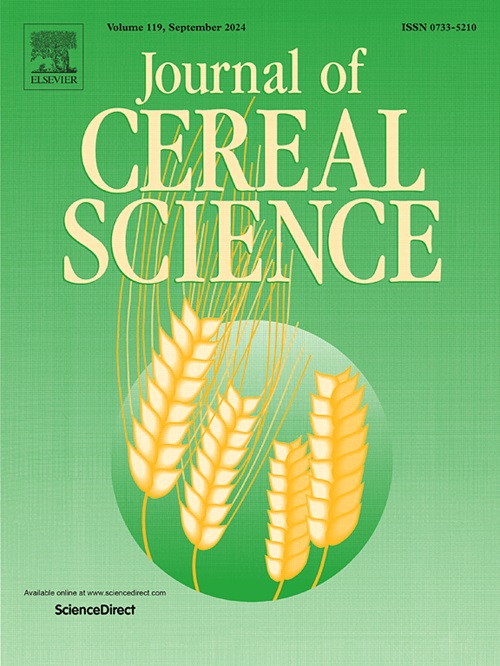Thermal processing of pigmented popcorn snacks: Effects on in vitro starch digestibility, nutraceutical compounds preservation and quality features
IF 3.9
2区 农林科学
Q2 FOOD SCIENCE & TECHNOLOGY
引用次数: 0
Abstract
This study investigated the effects of hot air, microwave, and wet cooking methods on six pigmented popcorn varieties, focusing on nutritional composition, starch digestibility, nutraceutical properties, and popping quality. Hot air popping generally yielded optimal results, producing the highest total starch content, increased resistant starch, and enhanced retention of anthocyanins and phenolic compounds. Black and blue popcorn varieties demonstrated enhanced nutraceutical potential, with black popcorn showing the highest anthocyanin content (150.25 ± 0.57 mg C3G kg−1 for hot air). Hot air popping also exhibited better expansion times and yields than microwave and wet cooking. Starch digestibility varied across methods and pigmentation, with black and yellow popcorn consistently showing higher slow-digestible (∼27 g/100 g) and total-digestible starch values (∼61 g/100 g). Scanning electron microscopy revealed different cell sizes in popped kernels. Microwave cooking resulted in longer expansion times and lower yields but preserved certain bioactive compounds. PCA analysis revealed that the thermal method strongly influences resistant starch formation, and that phenolic content varies and is affected by quality features. This study provides insights for optimizing popcorn processing to enhance digestibility and nutraceutical features, highlighting pigmented popcorn's potential in functional food applications.
色素爆米花小吃的热加工:对淀粉体外消化率、营养成分保存及品质特性的影响
研究了热空气、微波和湿法制备对6种色素爆米花的营养成分、淀粉消化率、营养保健性能和膨化品质的影响。热风爆破通常产生最佳结果,产生最高的总淀粉含量,增加抗性淀粉,并增强花青素和酚类化合物的保留。黑色和蓝色爆米花品种显示出更高的营养保健潜力,其中黑色爆米花花青素含量最高(150.25±0.57 mg C3G kg - 1)。热风爆破也表现出比微波和湿法烹饪更好的膨胀时间和产量。淀粉消化率因方法和色素沉着而异,黑色和黄色爆米花始终表现出较高的慢消化(~ 27 g/100 g)和总消化淀粉值(~ 61 g/100 g)。扫描电镜显示,膨化的玉米粒中细胞大小不同。微波蒸煮延长了发酵时间,降低了产量,但保留了某些生物活性化合物。主成分分析表明,热法对抗性淀粉的形成有强烈的影响,而酚含量的变化受质量特征的影响。本研究为优化爆米花的加工工艺以提高其消化率和营养保健特性提供了见解,突出了色素爆米花在功能食品中的应用潜力。
本文章由计算机程序翻译,如有差异,请以英文原文为准。
求助全文
约1分钟内获得全文
求助全文
来源期刊

Journal of Cereal Science
工程技术-食品科技
CiteScore
7.80
自引率
2.60%
发文量
163
审稿时长
38 days
期刊介绍:
The Journal of Cereal Science was established in 1983 to provide an International forum for the publication of original research papers of high standing covering all aspects of cereal science related to the functional and nutritional quality of cereal grains (true cereals - members of the Poaceae family and starchy pseudocereals - members of the Amaranthaceae, Chenopodiaceae and Polygonaceae families) and their products, in relation to the cereals used. The journal also publishes concise and critical review articles appraising the status and future directions of specific areas of cereal science and short communications that present news of important advances in research. The journal aims at topicality and at providing comprehensive coverage of progress in the field.
 求助内容:
求助内容: 应助结果提醒方式:
应助结果提醒方式:


